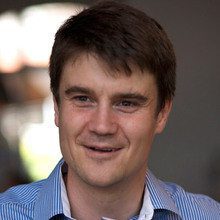Published last November, Andrew Charlton’s Quarterly Essay Man-Made World: Choosing between progress and the planet made some fundamentally important points: that solutions to climate change must allow for economic development in poorer countries; that a large part of the solution is available from improved technology; and that “our goal should be to create a world with abundant, clean and cheap energy for all.” However there are other data and other analyses leading to other conclusions.
The feasibility of a 100 per cent renewable energy future has been demonstrated by the Zero Carbon Australia Stationary Energy Plan, an award-winning analysis published by Beyond Zero Emissions, with The University of Melbourne Energy Research Institute in 2010. The Plan confirms that currently available renewable technologies are sufficient to meet the climate challenge. No peer reviewed analysis has challenged the feasibility of the Plan. Neither the Stationary Energy Plan, data nor analyses were referred to by Charlton.
Undoubtedly, the aggregate figures required to meet our energy challenge are very large. For example, Charlton points out that to meet one third of Australia’s electricity requirements from solar photovoltaics would require the commissioning a solar PV plant the size of the Moree Solar farm (150MW) every week from 2015-2020. Germany has already done it. Over 7500MW of PV was installed in 2011, following 7400MW in 2010 – equivalent to 50 Moree Solar plants, one every week allowing for a couple of holidays. An Australian feed-in tariff similar to the German tariff from 2012 would reduce the target to 4150MW of PV each year to 2020. Germany has done much better, installing 4150MW of PV in the three months from October to December 2011.
The solar PV cost reductions associated with the growth of the industry has been one of the great success stories of renewable energy. Solar PV electricity costs are projected to reach retail grid parity in many countries, including Australia, within the next two to three years
And the numbers cited by Charlton on creating a world powered by renewable energy — borrowed from Australian-American inventor Saul Griffith — should not be used out of context.
We must recognise the formidable industrial capacity developed countries have available. As Griffith notes: the speed of solar panel creation is comparable to the output of the current global mobile phone industry, and the amount of mirror surface required for solar thermal is comparable to the surface area in the 110 billion cans of soft drink that Americans drink every year! Most interestingly, 12 wind turbines per hour is about 100,000 turbines per year – minute compared with the 77 million vehicles manufactured worldwide in 2010 . China plans 1000GW of wind by 2050, which is half the global capacity which Griffith specifies. His conclusion on whether we have enough industrial capability is: “Awesome. We can do it.”
The 11.5TW of power over one year indicated by Griffith (not 13TW as claimed by Charlton) is equivalent to just under 110,000TWh of electricity (Griffith already accounted for the variable output of solar and wind), six times the world’s current electricity consumption. Charlton’s Renewistan would supply more electricity per person than Australia’s current level, to 8 billion people!
If Renewistan is a challenge – and it is – what about “Carbonopia”? What will it mean to increase global energy supply by the same amount using coal, gas and a bit of nuclear? Let’s get the smaller player — nuclear — out of the way first. Charlton envisages three nuclear plants a week for the next 25 years. Unlike wind turbines, there is no evidence to suggest this can be done. French group Areva has been unable to build even one new 3rd generation nuclear plant in Finland in 10 years .
Now let us consider the requirements to create a Carbonopia instead of Renewistan. To meet a future demand growth of an additional 11TW of electricity, we will build 5TW of coal-fired power plants, 5TW of gas-fired power plants. For the sake of this comparison we’ll allow for someone building just another 1TW of nuclear — good luck to them.
With generous assumptions on conversion efficiencies – 40 per cent for coal (supercritical or better) and 50 per cent for gas power plants (these would be state-of-the-art combined cycle gas turbines), we would need 394 exajoules (1018 joules) per year of coal and 315 exajoules per year of fossil gas to power them. This represents 3.5 times 2009 global thermal coal consumption and 2.7 times global fossil gas consumption .
This would require four new 1000MW coal power stations and four new 1000MW gas CCGT power stations to be commissioned every week for the next 25 years. A fossil power station of this size will take up several hundred hectares, 2-6 turbines each with their own associated piping networks, pressure control systems, boilers, coal-pulverising equipment for the coal plants, pollution control systems and smokestacks, all housed within several buildings the size of a large factory. They typically take 3-6 years from planning approval to final construction and require hundreds of workers to build them. Australia hasn’t commenced construction on a coal-fired power plant in over 8 years.
But that tells less than half the story. To feed these fossil-fuel machines, vastly larger amounts of land would be ripped up for mining and gas extraction activities.. If billionaire Clive Palmer presses ahead with his plans for his ‘China First’ coal mine, to produce 40 million tonnes per year, it will be Queensland’s largest. The world would need to open more than one of these coal mines per month for the next 25 years to feed such a megafleet of power stations.
Fifty-eight per cent of Australia’s coal reserves are in black coal basins that cover a third of the Queensland state, much of it on existing agricultural land. Carbonopia would require strip mining a coal resource the size of Queensland’s to exhaustion once every 1.7 years. Can mankind seriously contemplate such despoliation of the globe?
What about gas?
Australia currently has 16.3 million tonnes per annum (Mtpa) of LNG export capacity on the North-west shelf of Western Australia, consisting of five gigantic processing ‘trains’ built over 20 years with an investment of $27 billion .
Methane is now extracted from coal seams that were previously considered too deep or small to be for viable mining. Plans are underway by several companies to build terminals in Queensland similar to LNG plants to export our coal seam gas. One of these, the Gladstone LNG (GLNG) project Stage 1, will have two trains with a combined capacity of 7.8Mtpa. It is expected to be operational by 2015, and the network of coal seam gas fields feeding it will cover up to 24,000 square kilometres, consisting of 2650 wells, 2000km of gas and water gathering pipelines, 6800km of access roads, 150 nodal compressor stations and a dedicated 435km transmission pipeline from inland Queensland to Gladstone. Carbonopia’s growing demand for gas would require one of these GLNG projects – LNG trains, gas fields and all – every fortnight for the next 25 years.
When you look at Carbonopia in these terms, the sheer gutting of the earth it requires is appalling. And that’s not even considering health effects or catastrophic climate change.
The only viable scenario is, of course, renewables. The Zero Carbon Australia Stationary Energy Plan has already shown how Australia could be powered by 100 per cent renewable energy in ten years. Forty per cent of Australia’s future electricity demand could be met by 6,400 state-of-the-art 7.5MW wind turbines (Enercon E-126 or similar). Over 10 years, that’s an average of only 640 per year – equivalent to a tiny fraction of 200,000 new vehicles. manufactured by Australia’s heavily subsidised car manufacturing industry last year. Baseload power can be supplied from solar thermal plants with molten salt storage, such as those already operational in Spain.
The scale of the task is well within our capability. Getting the job done in 10 years would require the equivalent of 8 per cent of our construction workforce, 7 per cent of our concrete production, 1.3 per cent of the steel smelted from our iron ore production, and two new glass factories for mirrors.
To conclude on a more concrete recommendation and to address the question of deployment versus research and development, let us return to the solar photovoltaics example. A key factor is cost per unit of output. The astonishing cost reductions in solar PV have occurred not so much because of research as because of the huge industry scale-up over the last five to 10 years. This occurred because of deployment incentives in leading markets such as California, Spain, Japan, Italy and of course the largest, Germany.
There are plenty of policies that have led to limited, stop-start deployment of renewables, with Australian policy-making a prime example of how not to grow an industry. But since its inception, the (EEG) Renewable Energy Sources Act has led to the sustained and successful growth in German PV installations, which created the commercial incentive for companies to provide the cheapest systems they could. The feed-in tariff payment is reviewed on a half-yearly basis and adjusted downwards based on recent cost reductions and the quantity of PV installed over the previous period, in a careful and transparent manner which provides a stable market for the industry to grow, while minimising costs to the German consumers.
The value of the German FiT or any deployment policy should not just be viewed as the cost of achieving deployment now, but the effect of creating an industry capable of providing abundant, clean and cheap energy for all, at a much lower cost than fossil fuels in the near future.
Matthew Wright is executive director of Beyond Zero Emissions and 2010-11 Young Environmentalist of the Year








